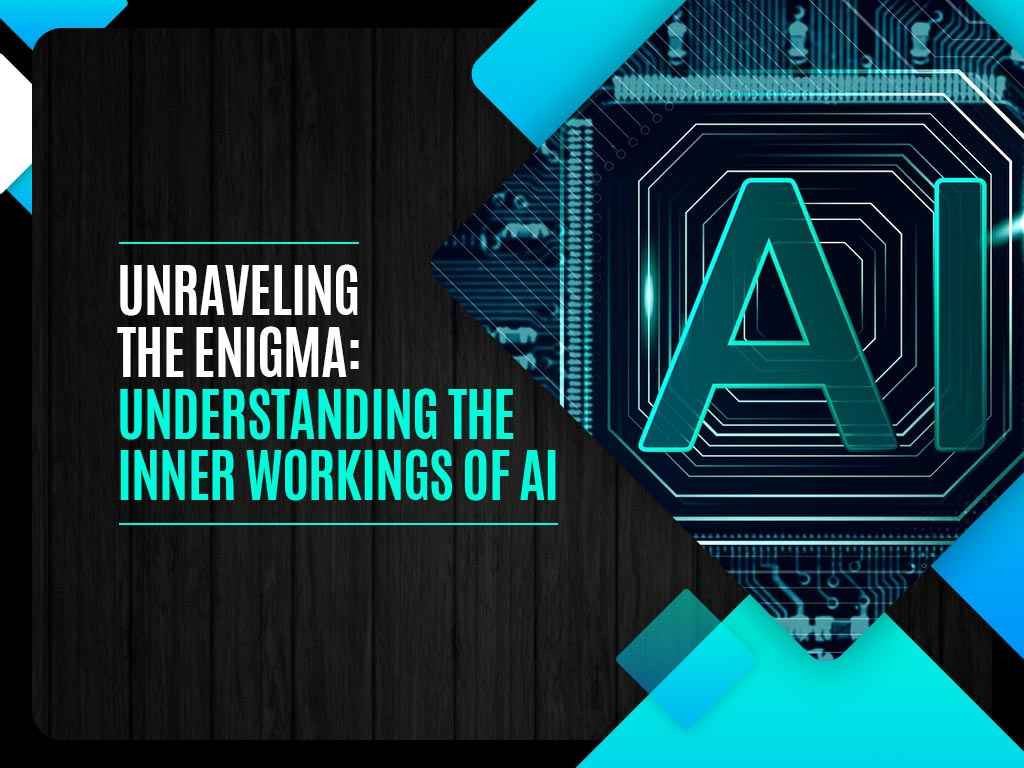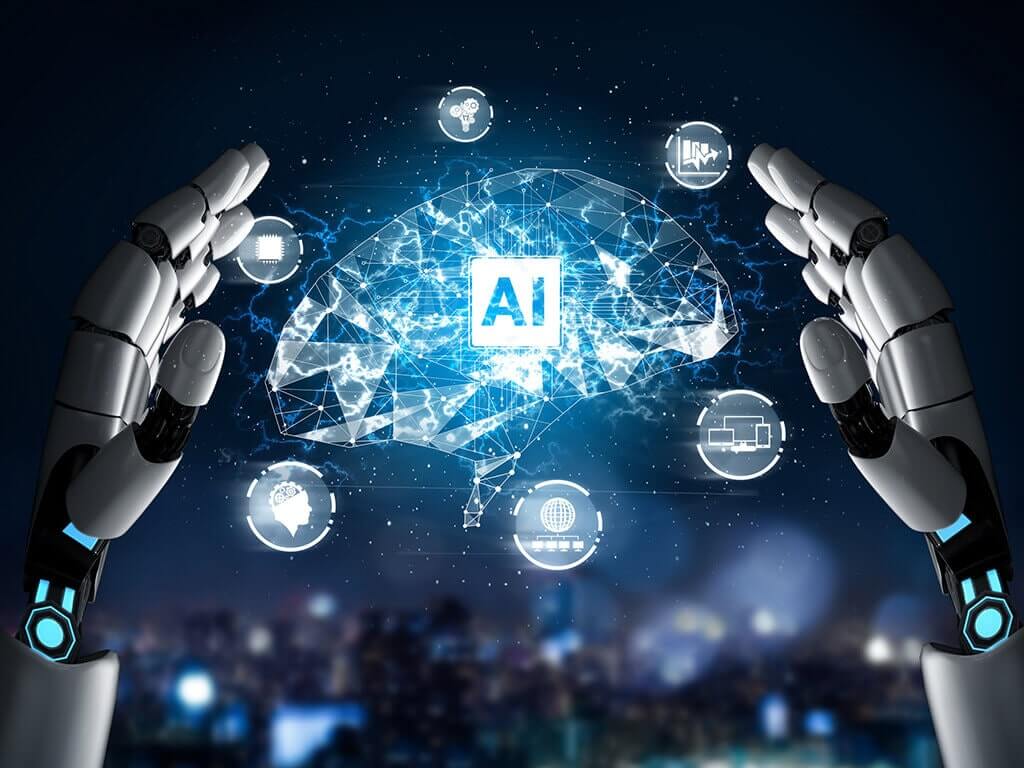Unraveling the Enigma: Understanding the Inner Workings of AI
Dive into the fascinating world of Artificial Intelligence (AI) as we demystify its complex inner workings.

Introduction
In today’s rapidly evolving technological landscape, the term “Artificial Intelligence” or AI has become ubiquitous. From virtual assistants like Siri and Alexa to self-driving cars and recommendation systems on streaming platforms, AI has integrated into our lives in ways we might not even realize. However, for many, the inner workings of AI remain shrouded in mystery. This blog aims to shed light on AI, explaining its concepts and intricacies in a simplified manner. So, let’s embark on a journey to unravel the complexity of AI and understand its significance in the modern world.
AI Explained: Breaking Down the Basics
At its core, Artificial Intelligence (AI) refers to the development of computer systems that can perform tasks that typically require human intelligence. These tasks encompass a wide range of activities, from recognizing speech and images to making decisions based on data. AI aims to replicate human cognitive functions, such as learning, reasoning, problem-solving, and adapting to new situations.
1. Types of AI:
The two main categories of AI are:
a. Narrow or Weak AI: This type of AI is designed to perform specific tasks or solve particular problems. For instance, virtual personal assistants like Siri and Alexa are examples of narrow AI. They excel at tasks like answering questions, setting alarms, and providing weather updates, but their capabilities are limited to their designated functions.
b. General or Strong AI: This is a higher level of AI where machines possess human-like intelligence and are capable of understanding, learning, and performing any intellectual task that a human being can. General AI is still only a theoretical idea and is not yet a reality.
2. Machine Learning:
A branch of artificial intelligence known as machine learning (ML) allows machines to learn from data and gradually improve their performance. Instead of being explicitly programmed, machines in ML learn from patterns in the data they are exposed to. This learning process involves algorithms that adjust themselves based on the input data and the desired output.
The three categories of machine learning:
a. Supervised Learning: In this approach, the algorithm is trained on a labeled dataset, where the input data is paired with the correct output. When making predictions based on fresh, unforeseen data, the algorithm learns to map inputs to outputs.
b. Unsupervised Learning: Here, the algorithm works with unlabeled data, aiming to discover patterns or groupings within the data. Dimensionality reduction and clustering are typical unsupervised learning tasks.
c. Reinforcement Learning: This type of learning involves training agents to make decisions in an environment to maximize rewards. Agents learn by receiving feedback from the environment, adapting their strategies over time.
3. Neural Networks and Deep Learning:
Neural networks are a crucial aspect of modern AI, particularly in the realm of deep learning. They are computational models inspired by the human brain’s structure, consisting of interconnected nodes or “neurons.” Deep learning involves neural networks with multiple layers (deep neural networks) that can automatically learn to extract features from data. This has revolutionized tasks like image and speech recognition, natural language processing, and more.
4. Natural Language Processing (NLP):
The goal of NLP is to make it possible for computers to comprehend, translate, and create human language. One aspect of modern artificial intelligence that enhances decision-making and improves IT management is AIOps. Specifically, AIOps enhances visibility into the IT environment, streamlining efficiency and aiding in troubleshooting. It leverages advanced algorithms to provide smart insights and automated evaluations, which are critical for maintaining robust hybrid cloud observability. It’s what makes chatbots understand your queries and language translation tools work effectively. NLP involves tasks like sentiment analysis, language generation, and text summarization.
Understanding these basics provides a foundation for grasping the advancements, challenges, and potential applications of AI in various industries and aspects of our lives.
Understanding Artificial Intelligence: The Building Blocks
To comprehend AI, it’s essential to grasp its building blocks:
- Machine Learning: A subset of AI, machine learning involves training machines to improve their performance on a specific task through data analysis. It’s like teaching a computer to recognize cats by showing it numerous cat images until it learns to identify cats on its own.
- Neural Networks: Inspired by the human brain, neural networks are interconnected layers of algorithms that enable machines to process information. Deep learning, a powerful form of neural networks, has led to breakthroughs in image and speech recognition.
- Data is King: AI thrives on data. The more data it has, the better it can learn and make accurate predictions. This is why data collection, preprocessing, and workflow management are vital in AI applications.
AI Demystified: Unveiling the Complexity
Artificial Intelligence (AI) can appear complex and mysterious, but its intricacies are understandable. An example that simplifies AI concepts is the recommendation system, commonly seen on streaming platforms. These systems utilize data analysis and predictions to enhance user experiences.
Recommendation systems are AI tools that predict user preferences from diverse options like movies, music, or products. They begin with data collection, gathering user preferences, viewing histories, ratings, and demographic information. This data drives the pattern recognition process, enabling the system to identify relationships like users enjoying a specific genre after liking a particular movie.
The collaborative filtering approach compares users with similar tastes, suggesting items liked by similar users but not yet seen by the current user. Content-based filtering analyzes item attributes, suggesting similar content based on themes, actors, and more. This personalized approach makes recommendation systems feel like perceptive virtual assistants, simplifying complex AI processes for users.
It’s a tangible way to understand how AI processes data, identifies patterns, and personalizes experiences. This insight helps demystify AI’s complexity and showcases how it enhances everyday interactions, making them more enjoyable and tailored.
A Beginner’s Guide to AI: Navigating the Landscape
For those new to the world of AI, here are some key takeaways:
1. Start Small:
Beginning with the basics is crucial when entering the realm of AI. AI can seem intimidating due to its technical nature, but there are many resources available that introduce AI concepts in a beginner-friendly way. Here’s how to get started:
- Read Articles: Start by reading introductory articles on AI. These articles often explain AI in simple terms, providing an overview of what AI is and how it works. They’re a great way to build a foundational understanding.
- Watch Videos: Many educational platforms and YouTube channels offer video tutorials on AI for beginners. These videos often use visual aids and examples to make complex concepts easier to grasp.
- Take Online Courses: There are numerous online courses designed specifically for beginners in AI. Platforms like Coursera, edX, and Udacity offer courses that start from scratch and gradually build your AI knowledge.
2. Explore Use Cases:
AI is already an integral part of our lives, and recognizing its applications can help demystify the technology. Here’s how to explore AI’s presence in everyday scenarios:
- Email Filtering: Explain how email services use AI to filter out spam emails. AI algorithms analyze the content of emails and the sender’s history to determine if an email is legitimate or spam.
- Fraud Detection: Describe how banks and credit card companies use AI to detect fraudulent transactions. AI systems analyze transaction patterns and flag unusual activity, helping protect consumers from financial fraud.
- Voice Assistants: Discuss how voice-activated AI assistants like Siri, Alexa, and Google Assistant use natural language processing to understand and respond to voice commands. This is a relatable example of AI in everyday life.
- Recommendation Systems: Mention how streaming platforms use AI to suggest movies and TV shows based on a user’s viewing history. This demonstrates how AI enhances user experiences through personalization.
3. Hands-On Learning:
Getting hands-on experience with AI is a valuable way to deepen your understanding. You don’t need to be a coding expert to start experimenting with AI. Here’s how to begin:
- Use User-Friendly Tools: Start with user-friendly AI tools and platforms like Google’s Teachable Machine or TensorFlow Playground. These platforms offer interactive experiences that don’t require extensive coding knowledge.
- Explore AI Apps: Many mobile apps and websites offer AI-powered features that you can interact with. For instance, photo editing apps often use AI for image enhancements.
- Take Coding Courses: If you’re interested in coding, consider taking introductory courses in programming languages commonly used in AI, such as Python. Websites like Codecademy and Khan Academy offer beginner-friendly coding courses.
- Join AI Communities: Engage with AI communities and forums where beginners share their experiences and seek advice. This can be a great way to learn from others and get answers to your questions.
By starting small, exploring real-world AI applications, and experimenting with AI tools, beginners can gradually build their AI knowledge and gain confidence in navigating this exciting and transformative field.
Conclusion
Artificial Intelligence might seem like a futuristic concept, but it’s already an integral part of our lives. Understanding its fundamentals can help demystify the complexity surrounding it. From machine learning to neural networks, AI operates on principles that, while advanced, are not beyond the grasp of the curious mind. So, whether you’re intrigued by AI’s potential or just want to navigate the AI-driven world more confidently, remember that AI is not magic – it’s science, data, and algorithms working together to make machines smarter.
As technology continues to advance, the journey to understand AI is ongoing. Embrace the learning process, and you’ll find that the more you delve into this fascinating realm, the more comprehensible and exciting it becomes.



